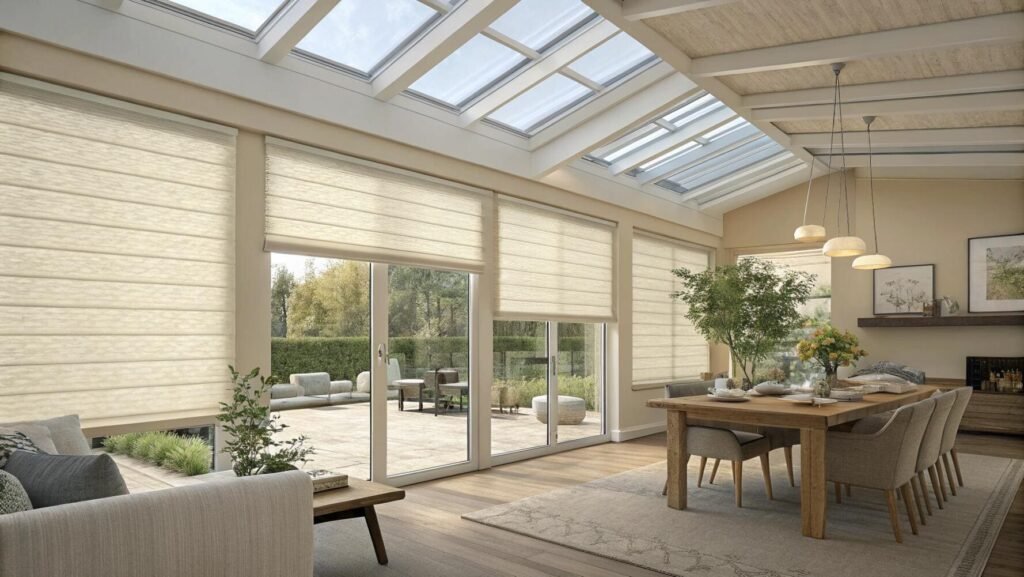You want the soft, ethereal light of sheer curtains but need the privacy control of blinds. Layering both looks heavy and feels complicated.
Shangri-La shades are a unique window treatment featuring soft fabric vanes suspended between two layers of sheer fabric. This innovative construction lets you control light and privacy by tilting the vanes from open to closed.

Their name suggests luxury[^1] and mystery, but they are one of the most practical and elegant solutions in modern window design. As a supplier, I've seen them transform spaces, but I also know the technical details that are crucial for project success. Let's look past the beauty and get into how they really perform.
What is a Shangri-La shade?
The elegant name can be confusing. Is it just a fancy blind? Let's break down exactly what this popular, high-end product is.
A Shangri-La shade is a modern window covering built with horizontal fabric vanes that "float" between two sheer fabric[^2] panels. The entire system rolls up into a sleek cassette headrail, combining the function of a blind with the look of a shade.

Think of it as a fabric version of a Venetian blind, but with much more softness and elegance. The front and back sheer panels provide a constantly diffused, soft light, while the fabric vanes in the middle do the heavy lifting of providing privacy and blocking more intense light. The "floating" effect is what makes them look so sophisticated. Unlike a traditional blind where you can see the supporting strings, here the vanes are seamlessly attached to the sheer fabrics, making them appear suspended in the air. This construction is what defines the product and gives it its signature light, airy aesthetic. It's a favorite among my designer partners who want a clean, minimalist look without sacrificing texture or functionality.
Are sheer blinds and Shangri-La blinds the same product with different names?
You've heard different terms and need to be sure you're ordering the right thing. Confusing these terms can lead to a project mistake. Let's clarify.
No, they are not exactly the same. "Sheer shades" is the broad category. A Shangri-La shade is a specific type of sheer shade, defined by its floating vanes between two sheers. A Zebra shade is another type of sheer shade.
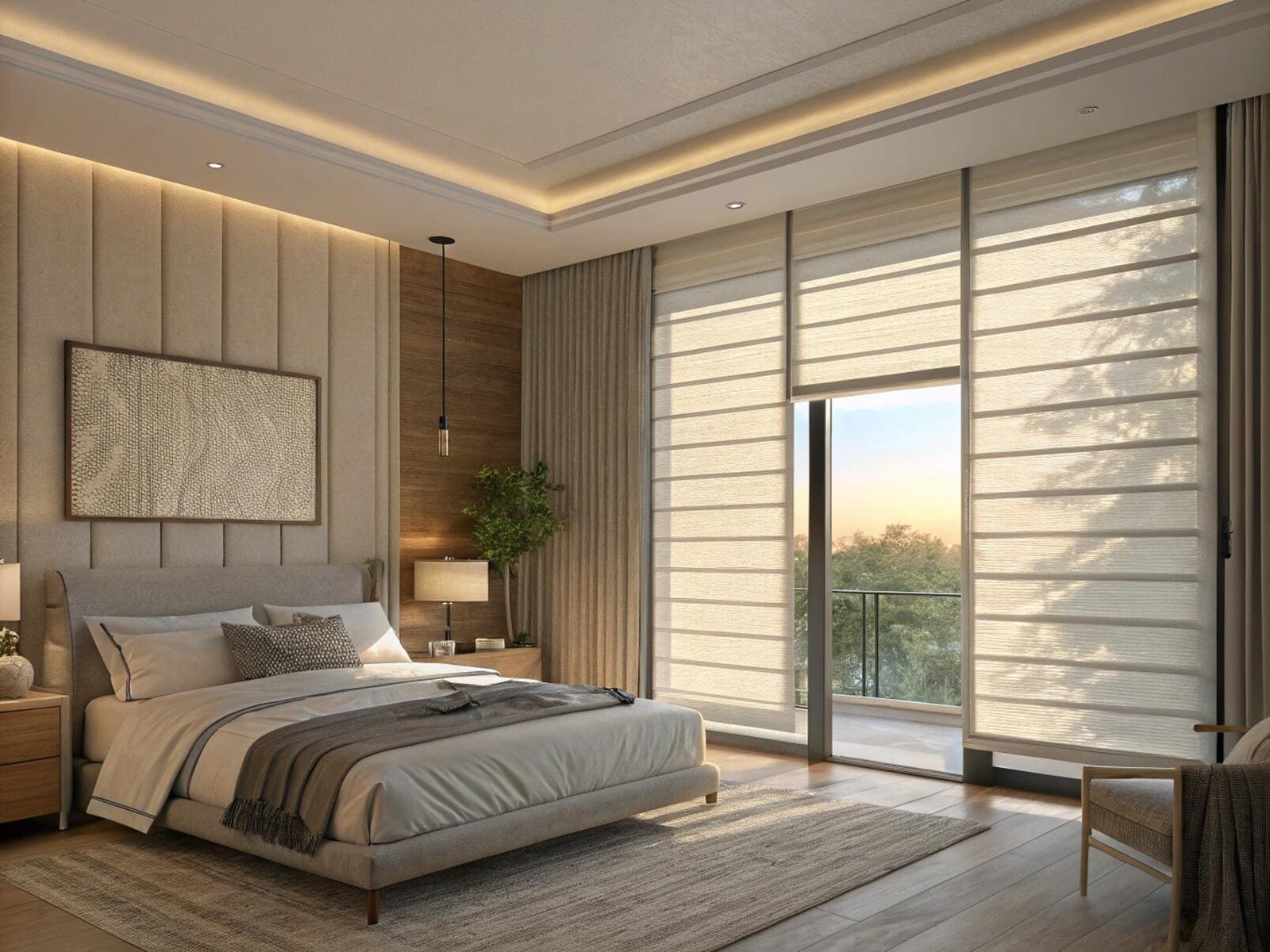
This is an important distinction for precise project specification. Think of it like this: "Sheer Shade" is the family name, while "Shangri-La" and "Zebra" are individual members of that family. Both use sheer fabric to control light, but they do it in completely different ways. I always make sure a project contractor like Emma understands this difference. If she asks for a sheer shade, I'll immediately ask for more detail to determine which construction best fits her design vision and functional needs. Getting this right ensures we source the exact product that will perform as expected and deliver the aesthetic the client wants.
Sheer Shade Family
| Shade Type | Construction | Light Control Method |
|---|---|---|
| Shangri-La | Fabric vanes suspended between two sheers. | Vanes tilt open or closed. |
| Zebra Shade | Alternating horizontal bands of sheer and solid fabric. | Solid bands slide to cover sheer bands. |
How are Shangri-La shades constructed with floating fabric vanes and sheer backing?
The floating effect looks like magic. But for a professional, knowing the engineering behind it is key to trusting its durability. Let's look inside.
The shade is a single, continuous "envelope" of fabric. The front and back sheers are joined by the horizontal fabric vanes[^3]. This entire fabric assembly rolls up and down as one unit from an overhead cassette, while the vanes tilt independently.

The construction is incredibly clever. It's not three separate layers; it's one integrated piece of textile engineering. This is crucial for its function. When you pull the cord or use the motor to raise the shade, the entire fabric envelope—sheers and vanes together—rolls smoothly into the cassette headrail, giving you a completely open window. The light control happens when the shade is down. A gentle pull on the control loop tilts the vanes inside the sheer envelope. You can adjust them to any angle, from fully open to let light filter through, to fully closed for privacy. This sophisticated mechanism requires precise manufacturing. A poorly made Shangri-La shade will have sagging vanes or an unreliable tilt function, which is why we at VelaBlinds are so focused on sourcing components that guarantee flawless, long-term operation.
How do Shangri-La shades provide adjustable light filtering through vane rotation?
How does one shade give you a sheer view and privacy? Understanding this primary benefit will help you sell the concept to your clients.
Light is adjusted by tilting the internal fabric vanes. When the vanes are open (horizontal), light filters through both sheers for a soft glow. When the vanes are closed (vertical), they block light and create privacy.
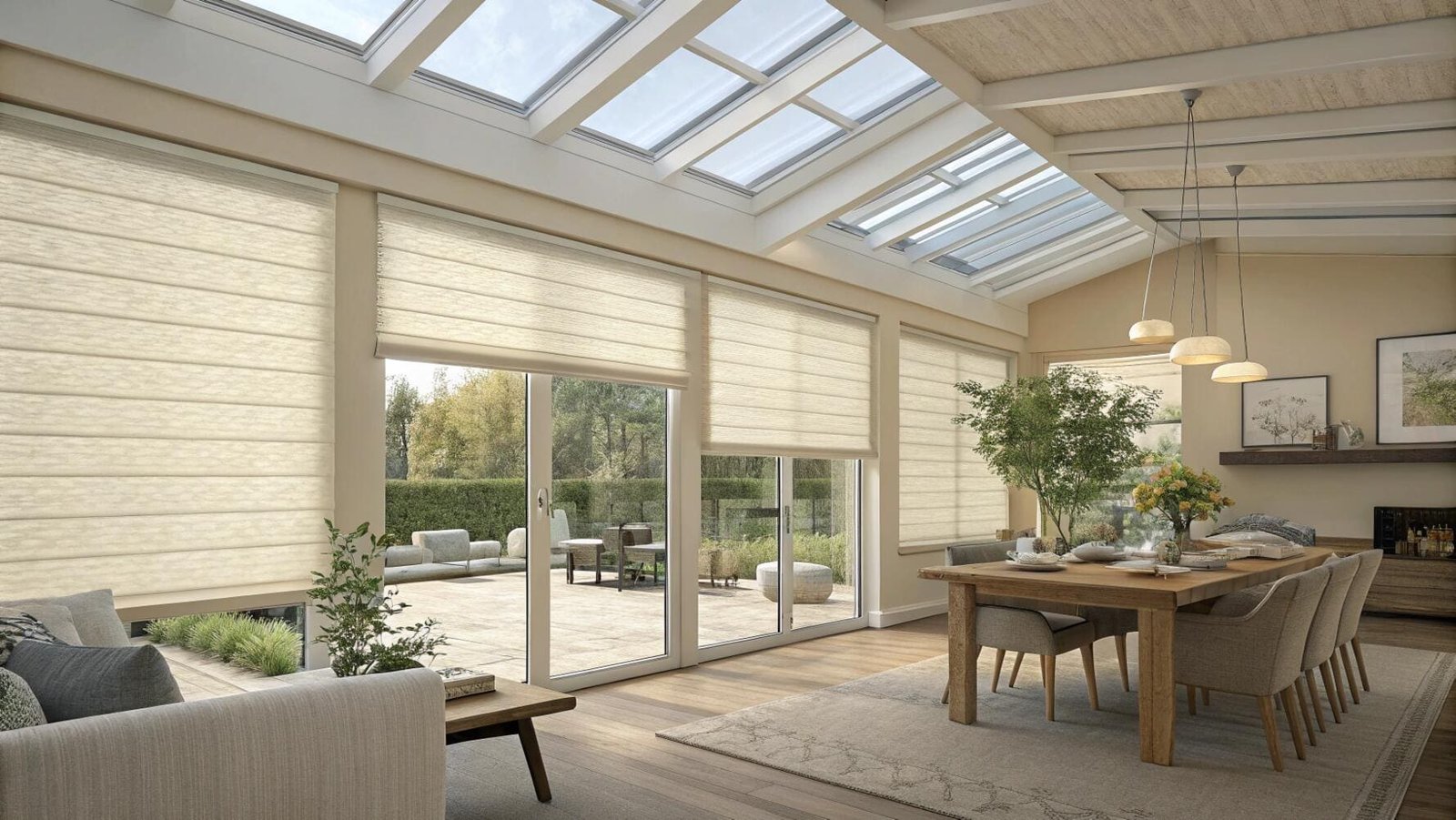
Shangri-La shades offer a spectrum of light control that few other products can match. It’s their number one selling point. You essentially get three shades in one. First, with the vanes open, you have a beautiful, light-filtering sheer shade that softens daylight and offers a soft, diffused view outside. Second, by tilting the vanes closed, you transform it into a privacy shade that blocks the view and darkens the room. This makes them incredibly versatile for rooms that serve different functions throughout the day, like a living room or home office. Third, you can raise the entire shade for a completely unobstructed window. This ability to instantly switch between a sheer view and solid privacy in one sleek product is why they are so popular in modern design. It's a level of dynamic control that is both functional and elegant.
Is there a shade I can see out of but people can't see in?
This is the ultimate request from clients. Delivering on this promise requires managing expectations about how light works, especially at night.
During the day, yes. The sheer fabric on Shangri-La shades lets you see out, but the light outside makes it hard for people to see in. At night, this effect is reversed if you have lights on inside.

I make sure every project partner understands this principle of light. A sheer fabric's privacy depends on which side is brighter. During the day, the sun makes the outside world the "bright side," so your view out is clear, while anyone looking in just sees reflections or shadows. This provides excellent daytime privacy while maintaining a connection to the outdoors. The moment the sun sets and you turn on your interior lights, your room becomes the "bright side." Now, anyone on the dark outside can see through the sheer fabric into your illuminated room. This is true for any sheer window covering. To get nighttime privacy with a Shangri-La shade, you simply tilt the vanes closed. This is a critical piece of information to give clients so they understand how to use their shades correctly to get the privacy they need when they need it.
What are the disadvantages of Shangri-La blinds?
No product is perfect for every situation. Knowing the downsides helps you place them in the right projects and avoid future issues.
The main disadvantages are that the sheer fabric is delicate and can snag, they do not provide 100% blackout, and they can be difficult to clean if dust gets inside the fabric envelope.

To be a good partner, I have to be honest about a product's limitations. The sheer fabric, while beautiful, is the main vulnerability. It's not the best choice for a high-traffic area, a child's playroom, or a home with pets that might claw at it. Second, the "room darkening" vanes are not "blackout." Faint light will still glow through the fabric and around the edges of the shade, so it may not be suitable for a client who needs absolute darkness to sleep. Finally, there's cleaning. Regular dusting is easy, but if they are neglected and dust settles between the sheers, it's very difficult to clean. These are not fatal flaws, but they are important considerations. You have to match the product to the client's lifestyle and the room's function.
What makes Shangri-La shades ideal for modern residential and commercial spaces?
How does this specific product fit within modern design philosophy? The answer lies in its unique combination of softness and clean lines.
Shangri-La shades are ideal for modern spaces because they diffuse harsh sunlight into a soft, ambient glow, creating a light and airy feel. Their sleek profile and minimalist hardware align perfectly with contemporary design aesthetics.
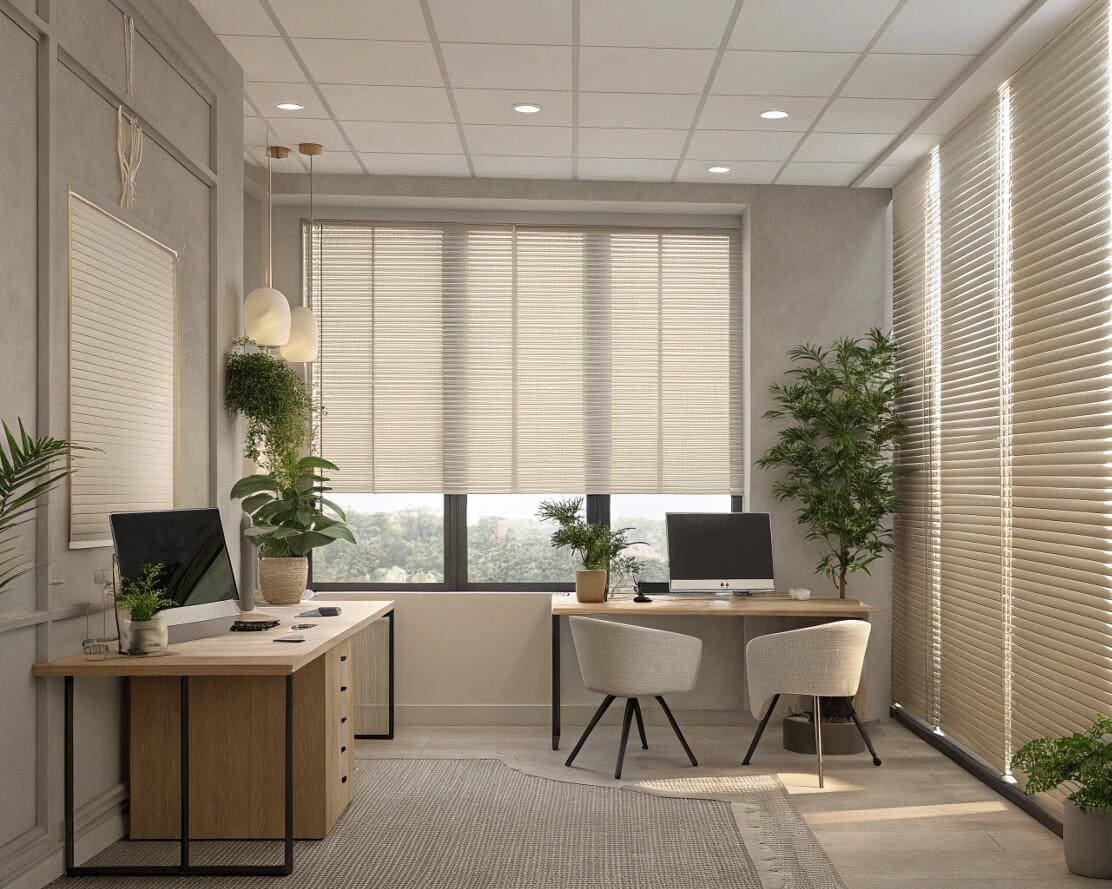
Modern architecture loves large windows and open spaces. But this can lead to problems with glare and a lack of privacy. Shangri-La shades are the perfect solution. They manage the light beautifully without resorting to heavy drapes or harsh-looking blinds. The soft, glowing light they create is a design feature in itself, making spaces feel more comfortable and sophisticated. For commercial spaces like offices or lobbies, they provide a high-end, professional look while controlling glare on screens and maintaining a connection to the outside. In high-end homes, they offer an unmatched level of elegance and versatility. They essentially do the work of a sheer curtain and a privacy blind in one streamlined package, which is exactly the kind of smart, multi-functional design that professionals like Emma are looking for.
How do Shangri-La shades contribute to energy efficiency and UV protection?
Beyond aesthetics, what tangible performance benefits do they offer? This is where they provide significant, measurable value for discerning clients.
Their double-sheer construction blocks up to 99% of harmful UV rays when the vanes are closed, and up to 88% when open. This protects interiors and provides some insulation by trapping air between the layers.
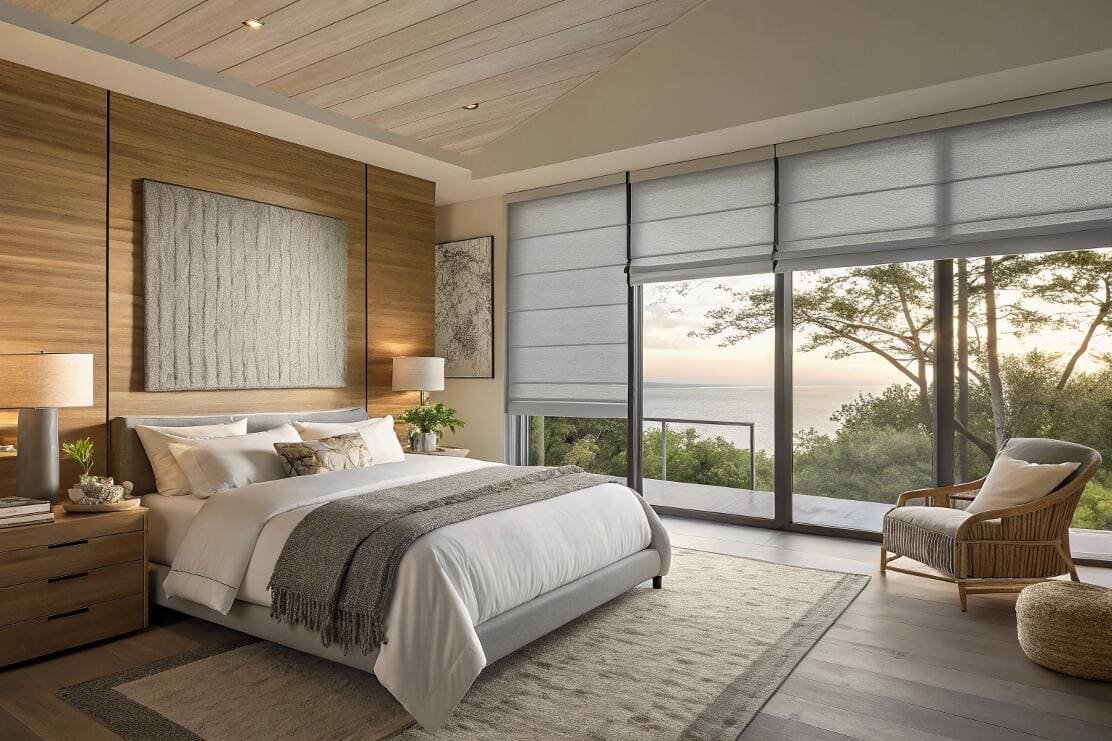
This is a huge selling point that many people overlook. The UV protection[^4] is incredible. For any project with expensive wood floors, custom furniture, or valuable artwork, this is a critical feature. The shades act as a transparent sunscreen for the room's interior, drastically slowing down the fading process caused by sunlight. I always provide my partners with the technical spec sheets on this. The energy efficiency is a secondary but still important benefit. The space between the two sheer fabrics creates a pocket of air that acts as an insulator, helping to buffer against heat gain in the summer and heat loss in the winter. While they are not as insulating as a dedicated cellular shade, they offer a significant improvement over an unadorned window, contributing to both comfort and lower energy bills.
How does Shangri-La shade pricing compare to traditional roller blinds and Roman shades?
Every project has a budget. Knowing where this premium product fits will help you manage costs and present options to your client effectively.
Shangri-La shades are a premium product. They are significantly more expensive than standard roller blinds and are typically priced higher than most custom Roman shades, due to their complex, multi-layered construction and included hardware.
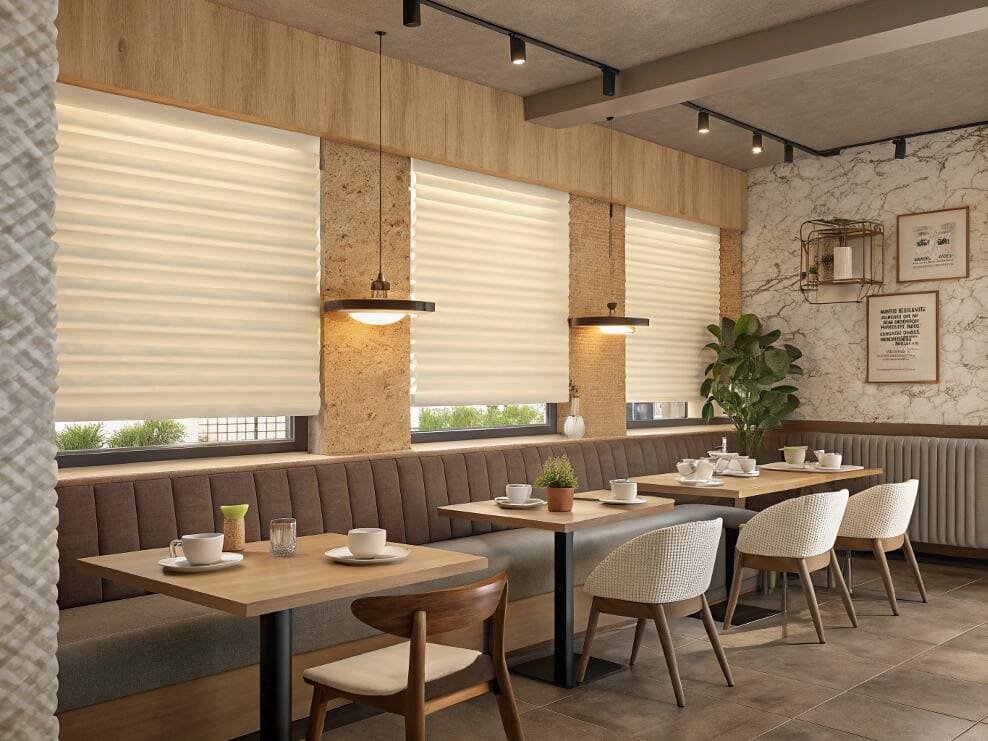
When quoting a project, I break down why the cost is higher. You are essentially getting three layers of fabric and a sophisticated mechanism[^5] in one product. The manufacturing process is intricate and requires specialized machinery to create the floating vane design. Furthermore, they almost always come standard with a premium cassette headrail that provides a clean, finished look. On a basic roller shade, a similar cassette is often a costly upgrade. When you explain to a client that a Shangri-La shade provides the function of both a sheer curtain and a privacy blind in one unit, the price becomes more understandable. It is an investment in a high-performance, high-design product. For high-end residential or key commercial spaces, the aesthetic and functional payoff often justifies the cost.
What maintenance requirements do Shangri-La shades have for optimal performance?
How do you keep this premium product looking its best? Proper care instructions are essential for long-term client satisfaction and to protect their investment.
Maintenance requires regular, gentle dusting. A vacuum with a soft brush attachment is best. For internal dust, a hairdryer on a cool, no-heat setting can be used to blow it out. Never use water or harsh chemicals.
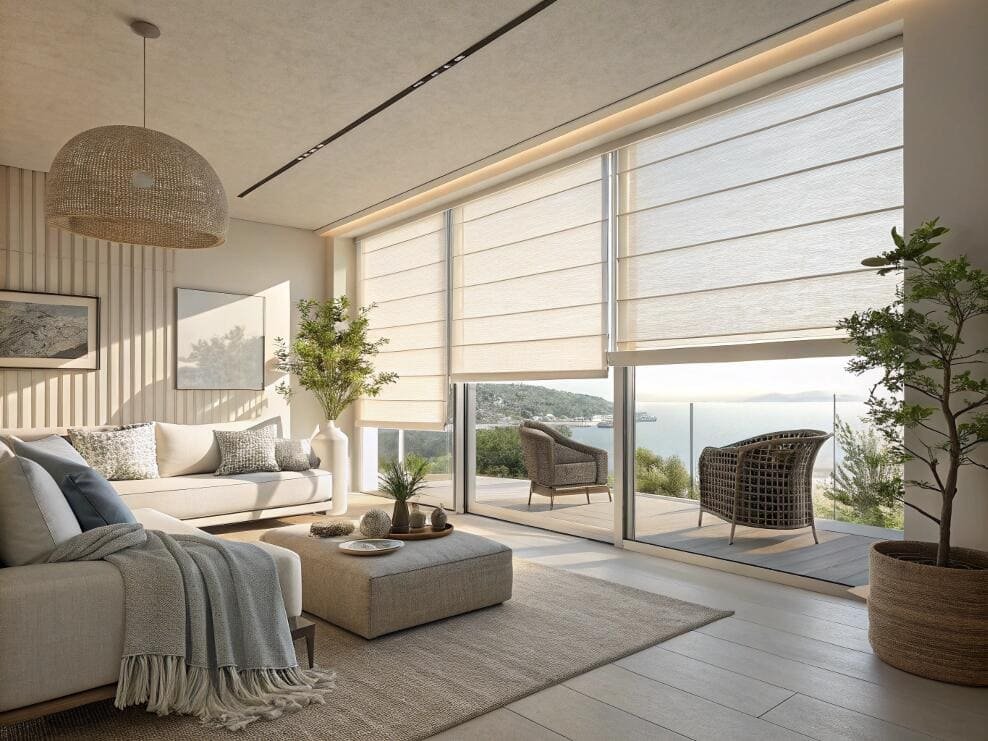
I always send a care guide with every order. The key is little and often. Because of the "envelope" design, preventing dust from building up is the best strategy. A light dusting once a week will keep them looking pristine. If dust does get inside, the trick is to use air, not liquid. Setting a hairdryer to its coolest, lowest setting and blowing air through the vanes can dislodge most dust particles. For the exterior sheer fabric, a vacuum brush on low suction works wonders. Spot cleaning is not recommended, as it can leave a water mark on the delicate sheer material. It's a product that rewards gentle care with lasting beauty. Providing these simple instructions ensures the client is happy with their shades for many years.
Conclusion
Shangri-La shades merge the softness of sheers with the function of blinds. They offer unparalleled elegance and dynamic light control, making them a premier choice for modern, light-filled spaces.
---
[^1]: Explore the elements that contribute to luxury in window treatments for discerning clients.
[^2]: Learn how sheer fabric enhances light diffusion and maintains a connection to the outdoors.
[^3]: Explore the role of fabric vanes in enhancing the functionality and aesthetics of window coverings.
[^4]: Discover the importance of UV protection in window treatments for preserving interiors.
[^5]: Understand the engineering behind Shangri-La shades that enhances their usability and design.Partner with VelaBlinds for Your Next Project
Smart window treatments shouldn't be complicated. After working with 500+ distributors and contractors worldwide, I've streamlined the process to get you quality products, competitive pricing, and reliable support - every time.
Why project professionals choose VelaBlinds:
- ✅ Fast, Accurate Quotes - Detailed specs and pricing within 24 hours
- ✅ Transparent Pricing - No hidden fees, volume discounts clearly outlined
- ✅ Quality Assurance - Direct partnerships with certified OEM manufacturers
- ✅ Project Support - Dedicated account manager from quote to delivery
Start your next project:
📧 Quick Quote: Send your requirements to info@velablinds.com
📱 Direct Contact: WhatsApp +86 137 2012 8317
🌐 Browse Solutions: https://velablinds.com/
📁 Product Resources: Access spec sheets, catalogs & project files
Jimmy Chen, Founder
"I built VelaBlinds to solve the real challenges I faced as a project buyer - long lead times, unclear specs, and unreliable suppliers. Let's discuss how we can power your projects with smarter blinds."
Serving distributors and contractors across North America, Europe, and Australia since 2018.

